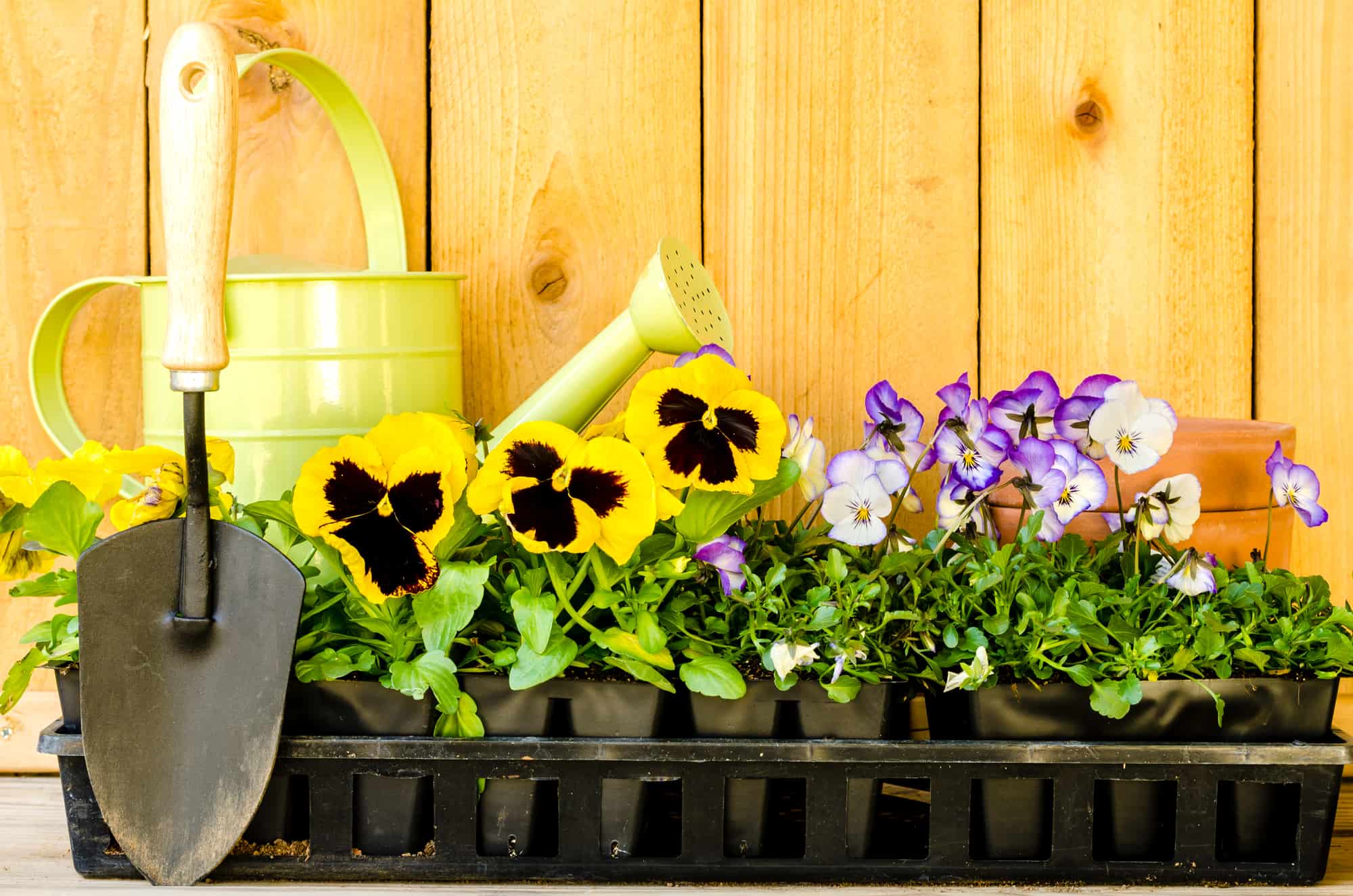There is a growing trend where porches and patios are treated as an extension of our indoor spaces. And it makes sense — thep orch is an excellent place to hang out with friends and family (or simply relax)!
With a few plants, you can bring more life to it; however, what are the best plants to grow under a covered porch?
The best plants to grow under a covered porch include creeping Jenny, caladiums, among others, as they will thrive in the shade. You can plant them in vertical containers, pots, and hanging baskets. This way, they will make a statement and make use of the vertical space.
It can be quite frustrating when you invest in a pot, plants, and time to liven up your porch and then have your plant shrivel and die.
When this happens, it is not always something wrong that you did. You may have simply chose the wrong plant.
Read on to learn about the plants that can thrive under shaded areas like your porch and the things you should consider before growing them.
Succulents
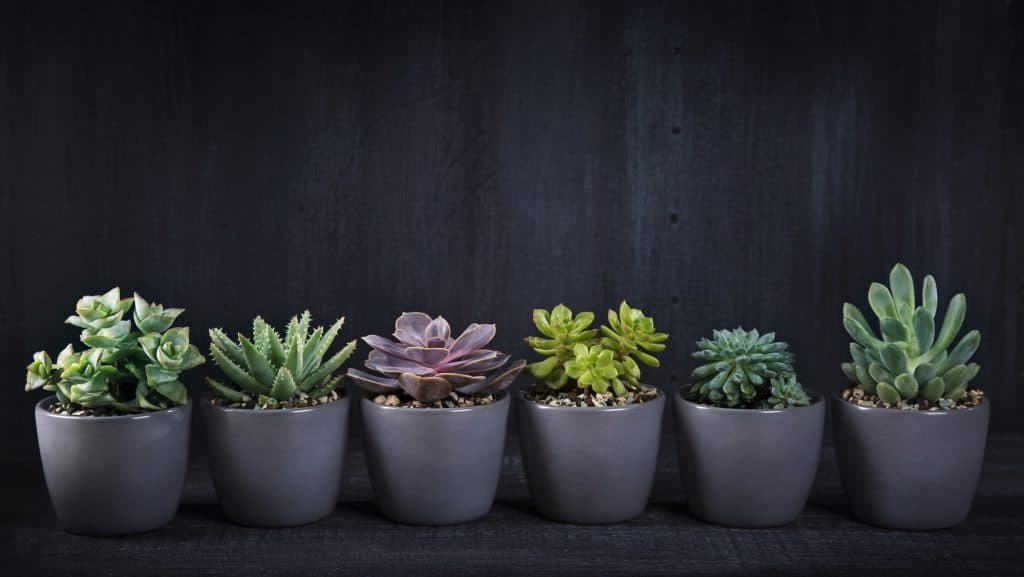
Many succulents can survive under the sun. However, when left under the hot afternoon sun, some will burn to a crisp. These are perfect for growing under a covered porch, especially during the hot summer. For you to tell the difference, succulents that require the sun will become weak, leggy, and refuse to flower under the covered porch.
Some of the succulents you can grow under a covered porch include sedum, jade, crassula, a variety of Sansevieria, kalanchoe, and devil’s backbone. Other cascading or vine-like succulents that thrive under the shade include burrow tail, a string of pearls, rosary vine, Christmas and Easter cactus, and wax plant.
Astilbe
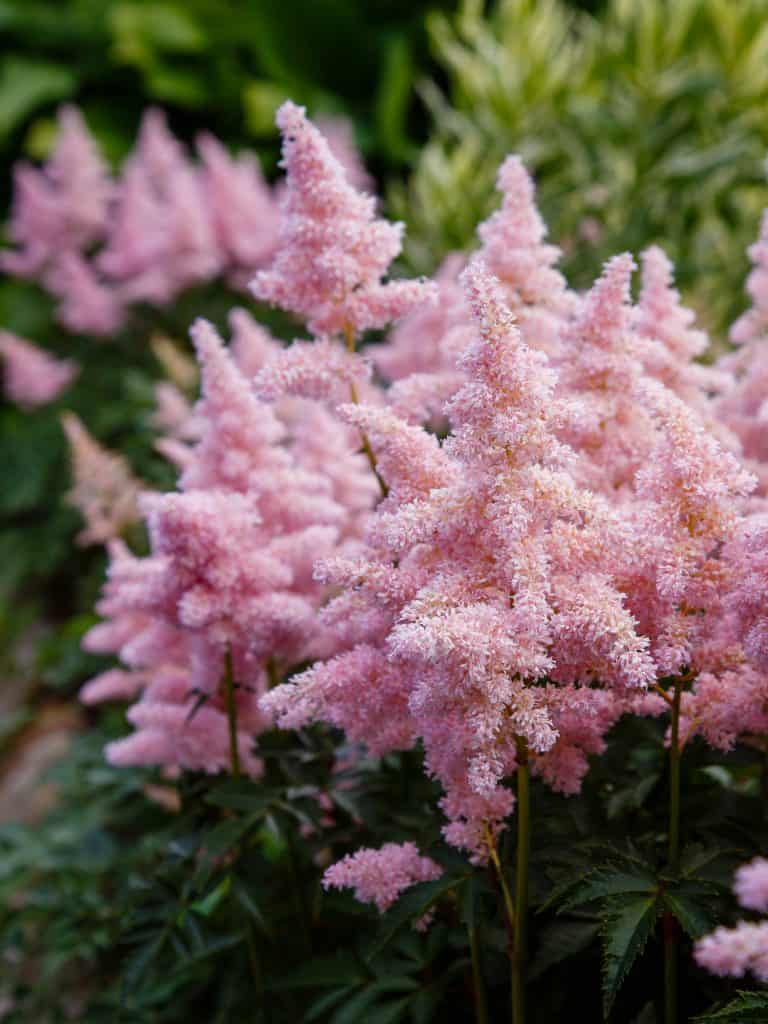
They are also known as meadowsweet, false goat’s beard, and false spirea. To make your porch look more vibrant with many colors, you can mix varieties that bloom at different times.
Astilbes have blooms that are feathery and plum-like. These blooms standout among fern foliage, making them the perfect thrillers in your mixed container porch.
They thrive in well-drained, moist soil and can take in some sun. However, scorching sunshine will burn their plumes. They look fantastic in fresh, floral arrangements and attract butterflies.
Make sure to get varieties that will fit your containers because they range between size 6 inches (15.24 cm) and 24 inches (60.96 cm).
Hosta
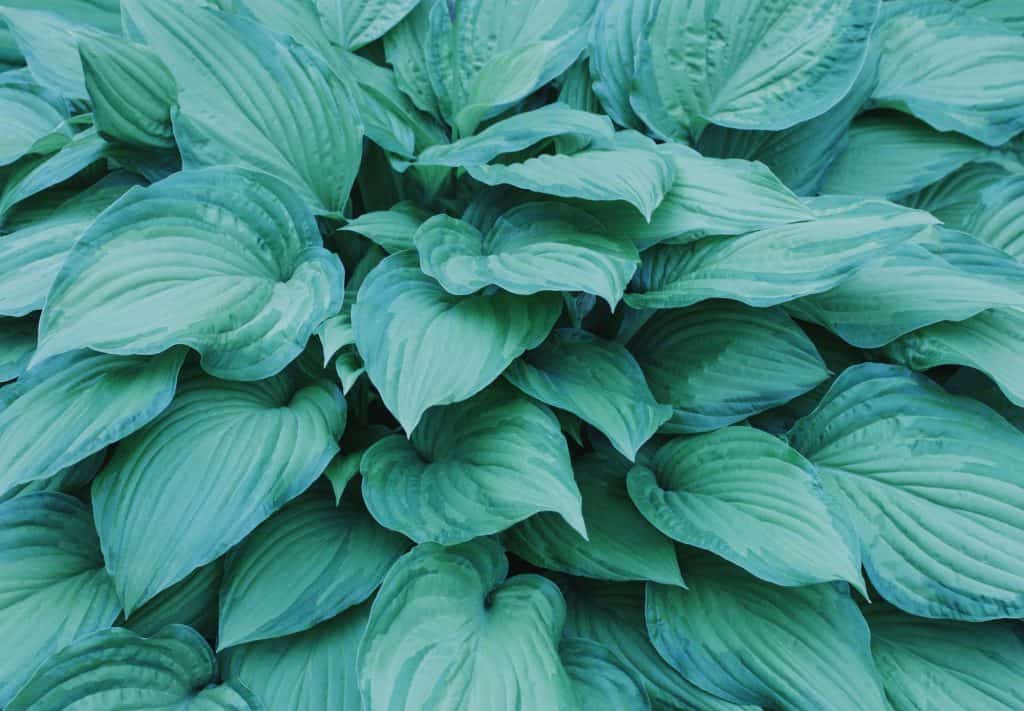
Hostas like rich, well-drained soil; therefore, avoid leaving them in dry conditions. Spread mulch and water them adequately for them to retain moisture.
Many hostas thrive under the shade, but some can survive under direct sunshine.
One of the challenges is that they have green, leafy foliage that provides a tasty treat for rabbits and deer. Similarly, their spikey lavender/white blooms attract butterflies, hummingbirds, and bees.
The former shouldn’t be a problem on your covered porch, but watch out for the bees in the summertime.
Elephant Ears

Elephant ears (also known as taros) bring to mind tropical forests, lush, and will add drama to your containers and porch. You will recognize most of them with an arrow or heart-shaped leaves that are oversized.
Their veins are very decorative, hence the name elephant ears. Some of its varieties can be exposed to the sun, but a few like caladiums, colocasia, and alocasia can survive in part shade.
Growing elephant ears is simple; they like the shade, filtered sun, moist and humus-rich soil.
They do not feed heavily, so during planting time, apply a slow-release fertilizer. Water them in the morning below the root zone, so they do not dry at night or get diseases.
Coleus
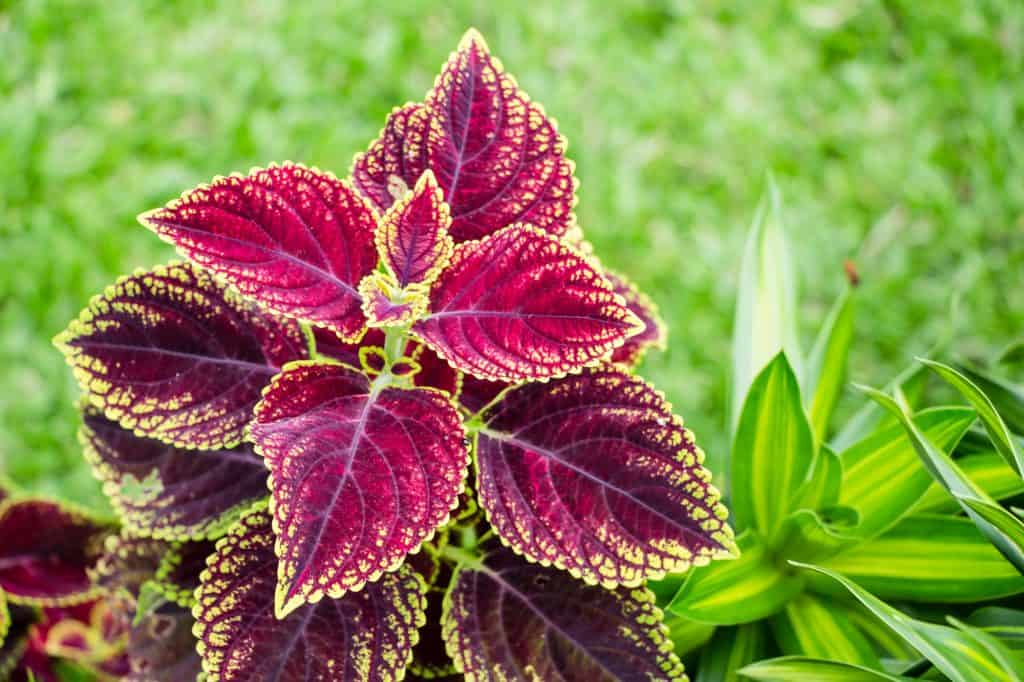
They are all-seasonal plants, can survive either under a shade or under the sun, thereby giving you flexibility.
Coleus requires very low maintenance. They belong to the mint family and offer a variety of foliage, with some having vast markings and colors, ruffled, or elongated. Coleus is grown as annual plants and survives in partial or full shade.
Plant them in loose, moist, and rich soil while maintaining a basic pH of 6 to 7.
Fuchsias
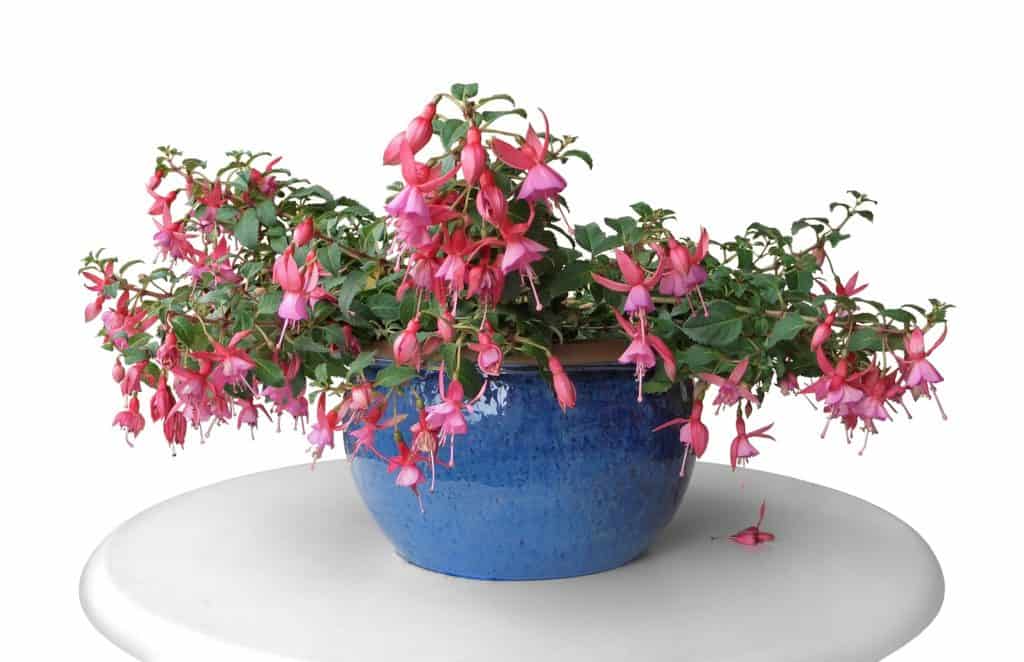
Fuchsias prefer temperatures of between 55 and 80 degrees Fahrenheit.
If temperatures go beyond this, they are likely to stop flowering. They thrive under the shade and in naturally cool summers, as opposed to sunny spots.
During warm weather, you will enjoy fuchsias as they produce a variety of unique flowers in different colors. By planting them in a hanging basket or tall containers and tending to them, they will spill over their sides beautifully.
Begonias
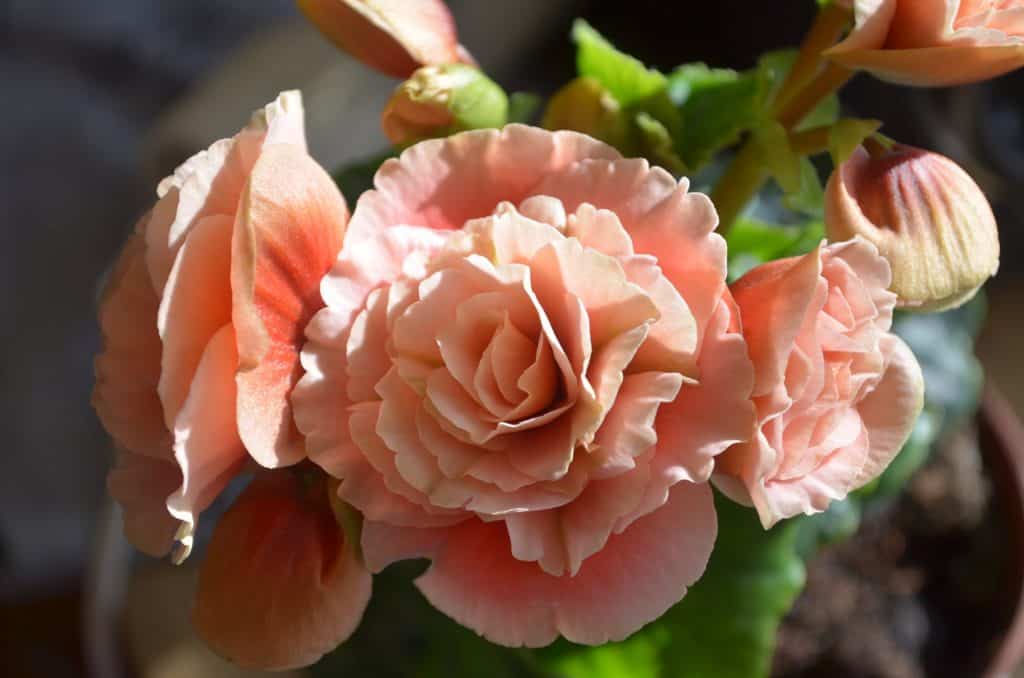
There are a variety of begonias, and the only way to distinguish them is through their root types. There are tuberous and fine-fibrous begonias. They both prefer low light and well-drained soil, making them a perfect choice to grow under a covered porch.
Many tuberous begonias can overwinter in a container so place it in a cool, dark, and non-freezing location.
They barely require any watering; you can do so once a month. Plant begonias next to other plants that love shade like heuchera and hosta.
Wishbone Flowers
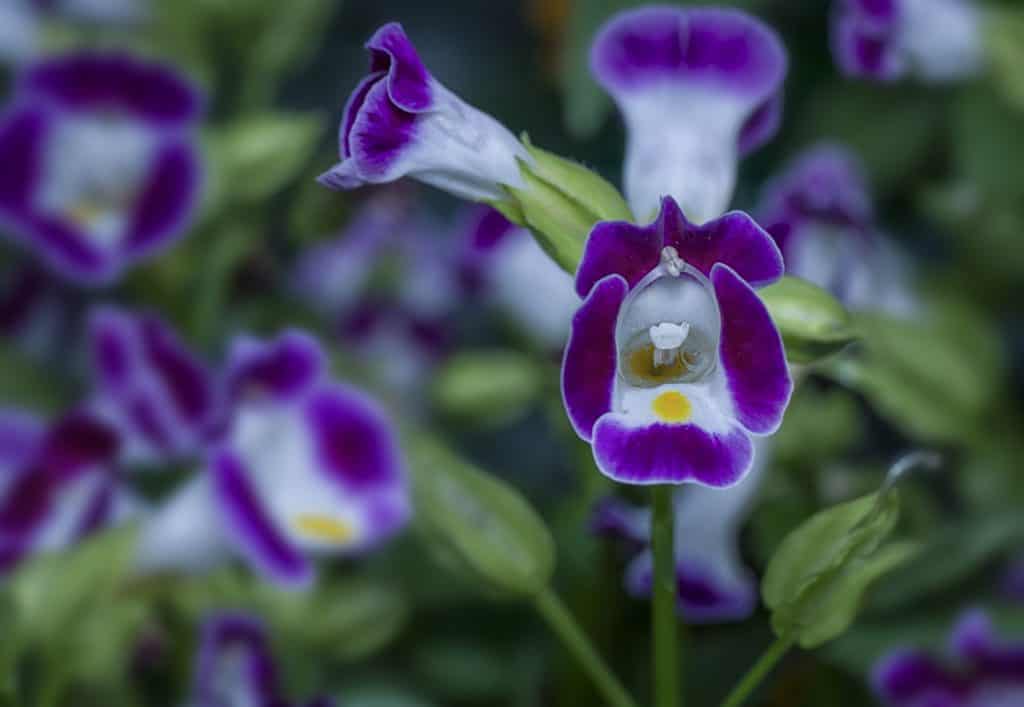
Wishbone flowers are an excellent choice to bring life and color to your covered porch.
The blooms have a trumpet shape and come in a range of color choices.
Primary species are lavender and dark-blue in color, with yellow marks. There is a pair of stamen within every flower that unites in a wishbone shape, hence its name.
Wishbone flowers will do well in the spring season after the frost passes and bloom quickly during summer till winter. Plant them in well-draining, medium-moist, and loam soil. When planting, do not cover the seeds with soil as they need light for them to germinate.
Hellebores
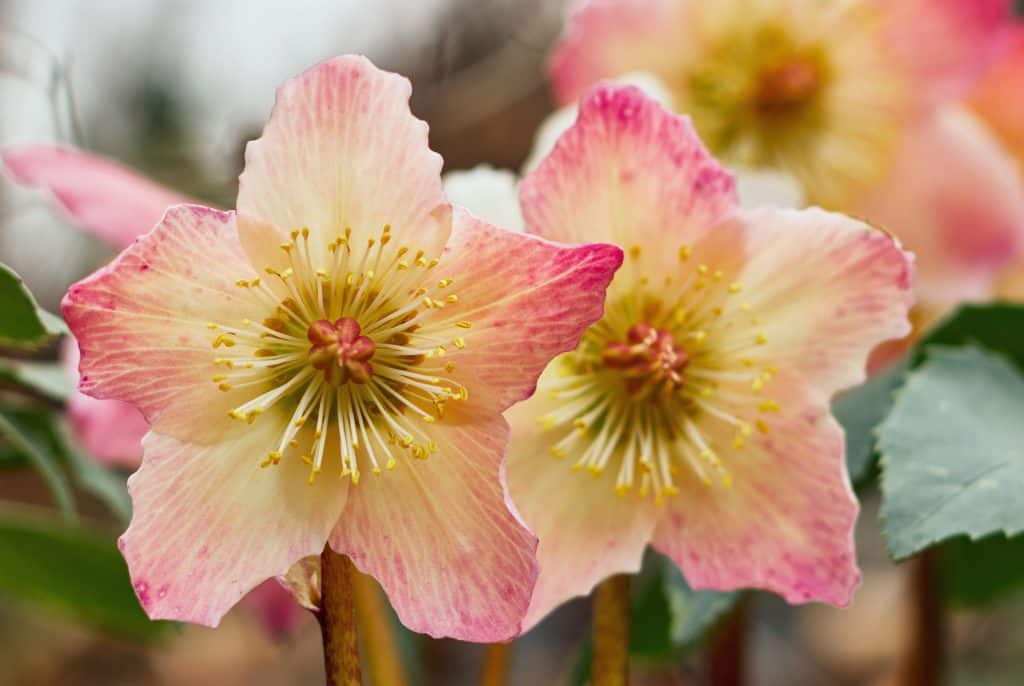
Hellebores are also known as Christmas Rose or Lenten Rose and are famous for their seasonal timing.
When many of your plants become lifeless and drab on your porch during winter, hellebores bloom in different colors, from deep purple, white to light pink.
They grow up to 2 inches (5.08 cm) tall and do not outgrow the container; therefore, it will not require dividing for years.
Hellebores are rabbit and deer resistant and are drought-tolerant; hence they need minimal attention once they establish themselves.
Clematis
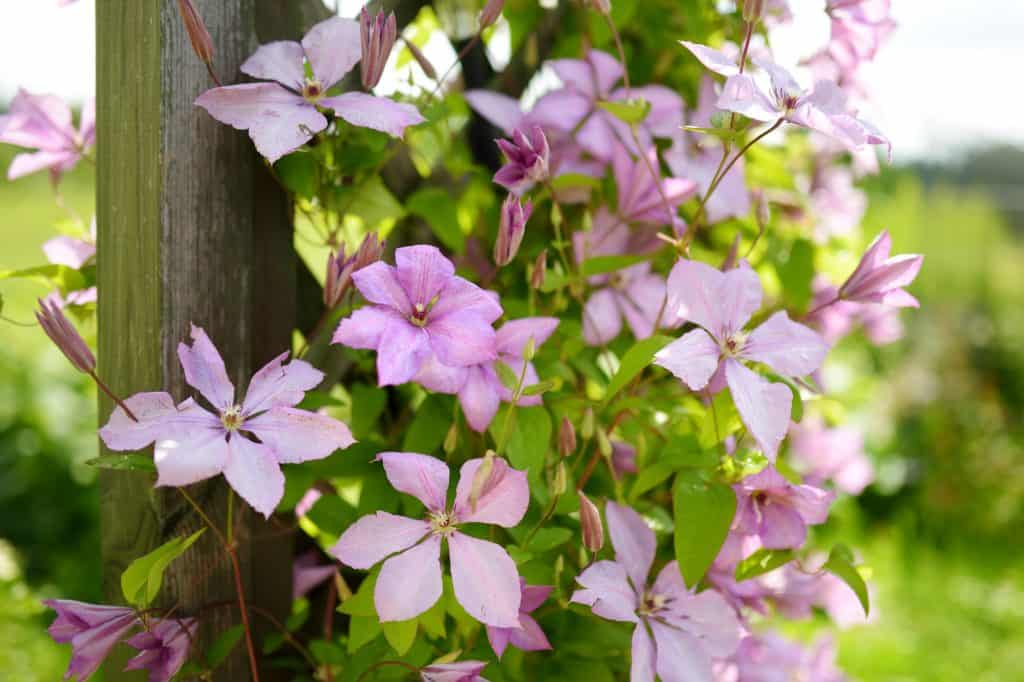
There are about 300 clematis species and several hybrids that will enable you to choose one that suits your porch’s condition and color.
A big advantage to choosing Clematis is that they are evergreen.
You can contact your local gardener or extension to find one that will work well for your conditions. For example, you can plant vining clematis, which looks beautiful in a container and climbs up a pergola, trellis, or arbor. Clematis will survive best in moist, well-drained soil.
Plant clematis deeply and add organic mulch, but avoid piling it up to the stem as this will result in wilting. Fill the remaining part of the container with shade-loving perennials or other flowering annuals.
Mohanias
Also known as the Oregon grape because of the small bluish fruits, the Mahonia displays fragrant, golden-yellow flowers.
These flowers produce an invaluable amount of pollen and nectar that attracts bees. Mohania is evergreen with spiny foliage that looks fantastic when planted among other contrasting foliage flowers that survive in the shade.
To get the best results, grow them in well-drained and moist soil. Ensure the hole is deep enough, add well-rotted compost, sprinkle some mycorrhizal fungi, and make sure the root ball sits firmly below the soil surface.
Pansies
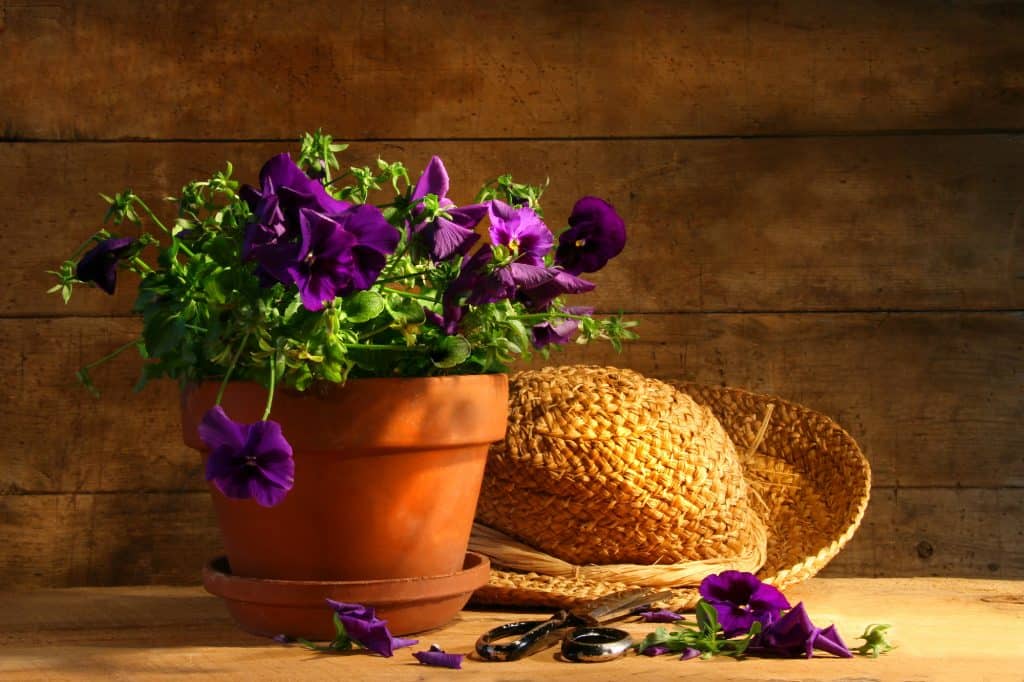
They are colorful flowers fit for cool weather, making them perfect for growing under a covered porch. Pansies can be perennial or annual, but most gardeners treat it as an annual plant because it thrives better in cool weather and gets leggy in the hot summer. You can plant them in containers, as borders or ground cover.
They are reliable or year-round with pretty colors that can stand alone or be mixed with those of other cool-season flowers. Plant them in well-drained, humus-rich, and moist soil and space them between 7 (17.78 cm) to 12 inches (30.48 cm).
Dead Nettle (Lamium)
It is a perennial, easy-to-care-for plant that comes from the mint family. It thrives in the shade, making it an excellent choice for a covered porch. It has silvery foliage that produces clusters of white or pink flowers that look like snapdragons during summer.
They can be grown as a ground cover but will look charming when grown as a spiller around other shade lovers or as a standalone in a pot.
Toad Lilies
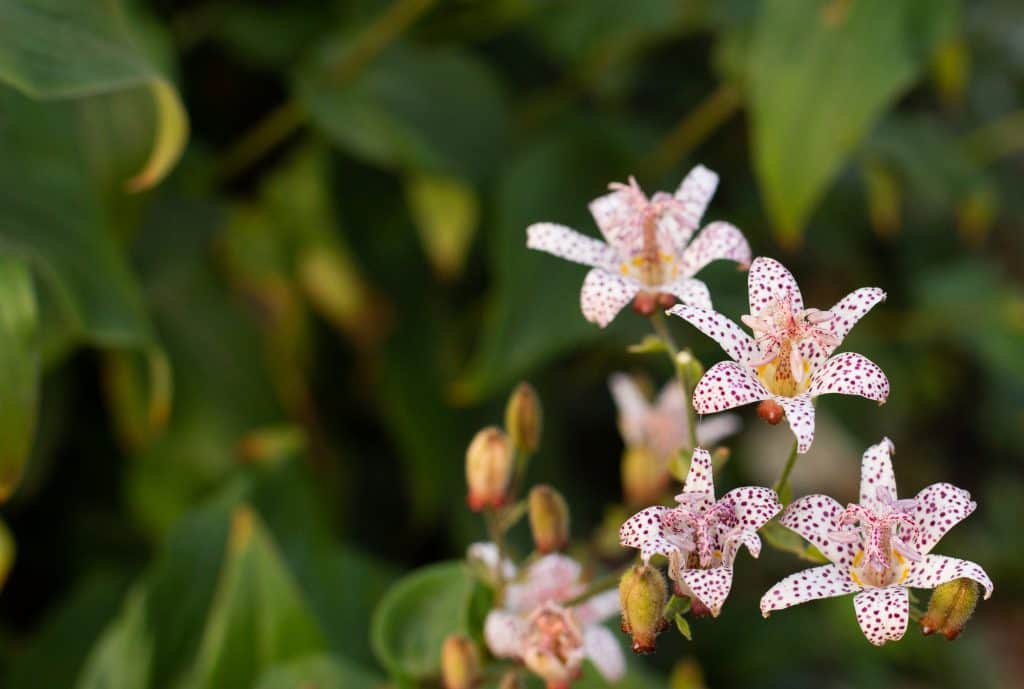
Toad Lilies are pollinator-friendly flowers that are very attractive and will make your porch look more vibrant when grown in containers.
They burst with beautiful, orchid-like, and speckled flowers in the fall, but they have a super attractive lush foliage when they do not bloom. When cut, their stems make an excellent addition to fresh floral arrangements.
Amend their soil with organic matter and keep it moist. Protect them from deer and rabbits because they offer a tasty treat for them.
Because toad lilies take a long time to spread, you can retain the container where you grow them for two or three years before dividing them.
Violas
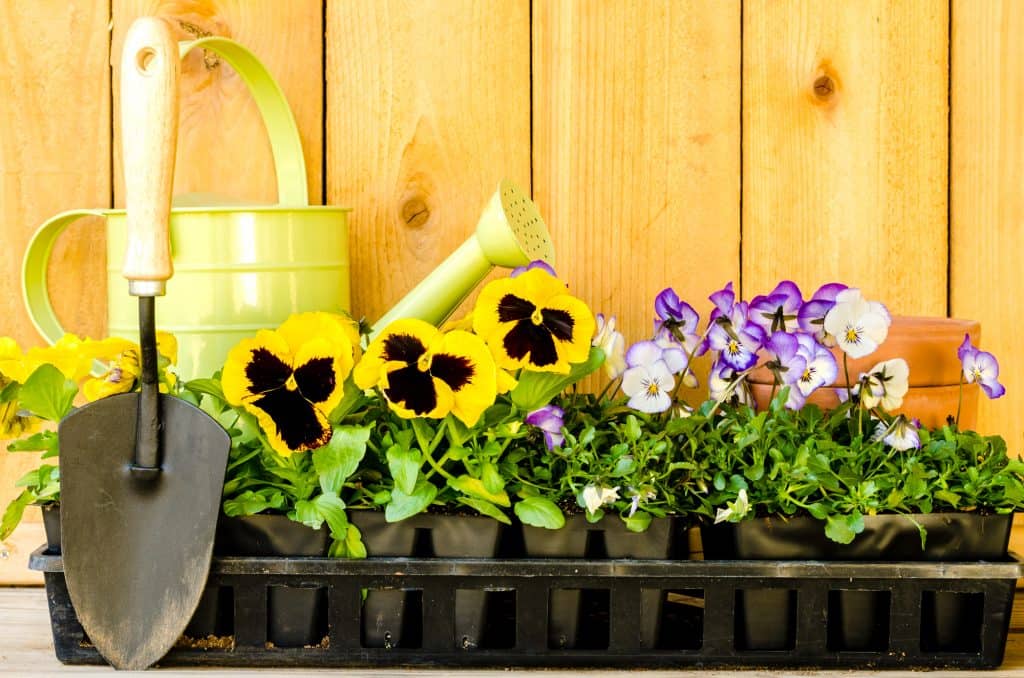
There are more than 500 viola species, some being subshrubs, perennials, and annuals.
Violas, as a group, include plant species, cultivars, and hundreds of hybrids. You can grow a variety of them under your porch, mostly short-lived perennials or small-flowered plants. They require little to no attention because they self-feed, thereby giving you many years of delight.
To add to the list of advantages, violas are edible, and you can use them as a garnish or incorporate them in your salad. They can also be used as candy on frosted cakes as decoration. Plant them in well-draining, moist, and rich soil.
Bleeding Heart
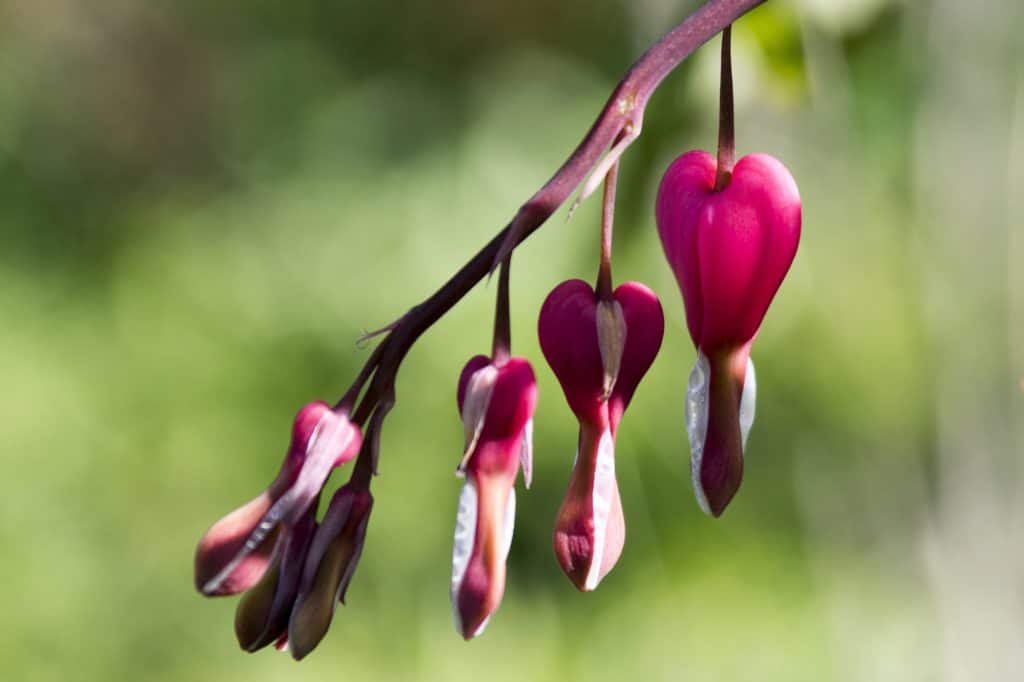
The bleeding heart will capture your attention with its heart-shaped blooms and bluish-green foliage.
To care for it, water the soil consistently to keep it moist and pile organic mulch. Work compost in a pot or container before planting it in fall or spring.
They thrive in cool, shady areas, making them an excellent choice for your covered porch. Under the hot sun, especially during summer, they will turn yellow and wither.
Bleeding hearts store food reserves in their foliage, so when they start to turn brown or yellow, do not remove them. Regularly fertilize them and add additional compost as they grow as part of their care.
English Ivy
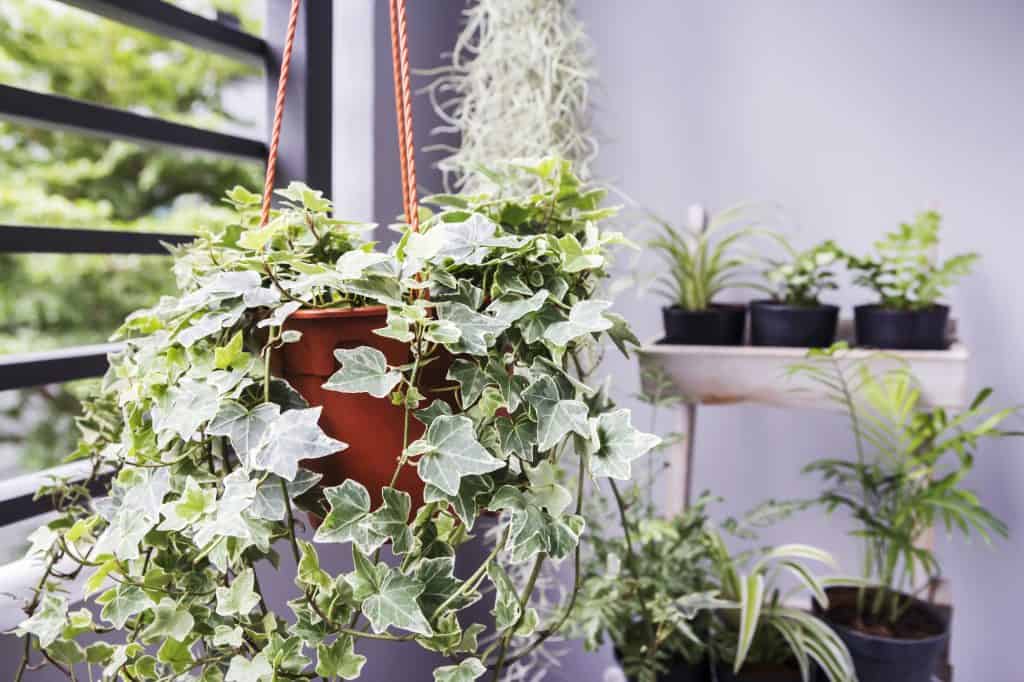
It is a popular container plant because it looks incredible as a spiller when mixed with other flowering plants and textural greenery like hostas and ferns.
It is the perfect fit for a lazy gardener; you water it when it dries, and you are good to go. You can find various English Ivy; they come in different sizes and variegated white and green foliage. Its evergreen color will look great with summer and spring boomers.
Ferns
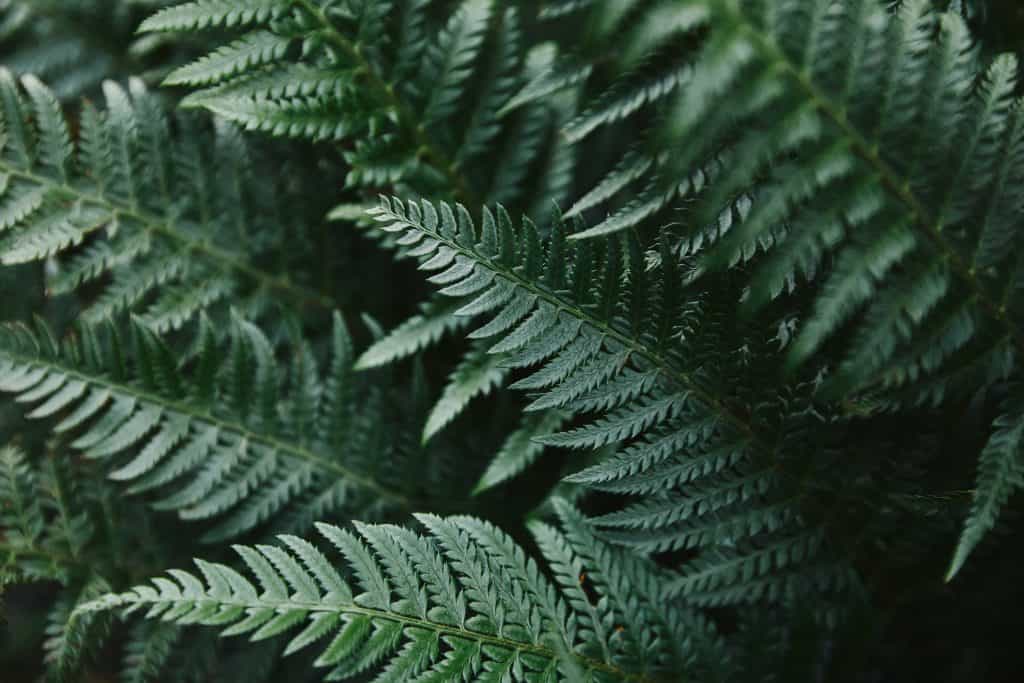
When planted in hanging baskets, ferns make a quintessential accessory for your front porch. It is relatively easy to grow and take care of them. Keep them under a covered porch, away from the direct midday sun, and keep the soil damp by watering them frequently.
Protect them from heavy rains and wind, and use some organic mulch to increase moisture and keep them healthy.
Hydrangea
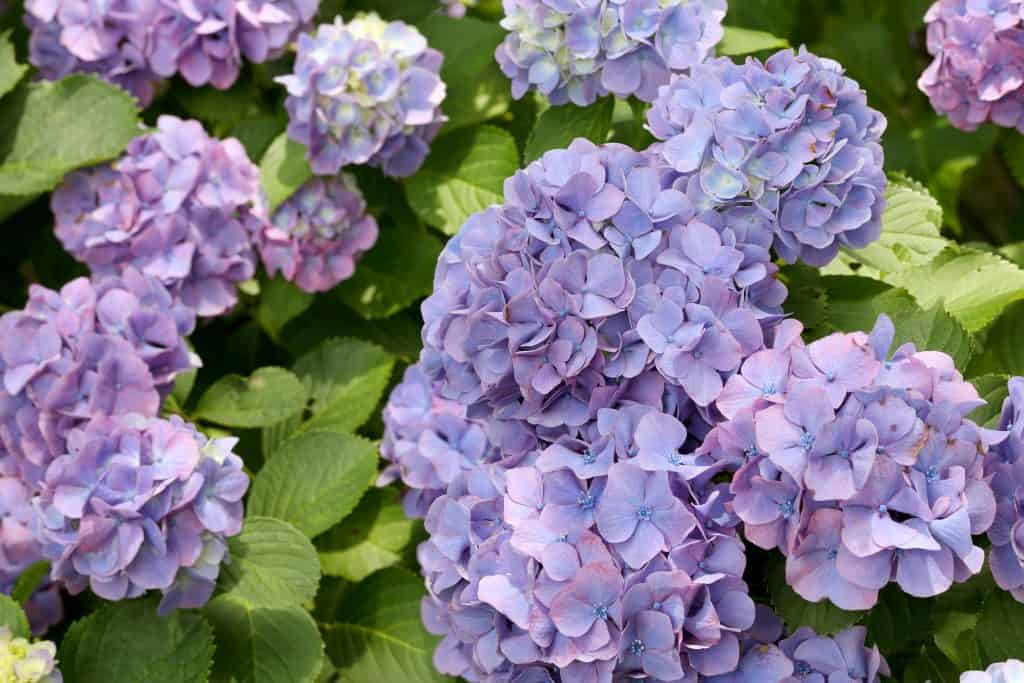
Hydrangeas come in different varieties and make the perfect pot plants. However, the challenge that comes with them is giving them a sufficient water supply.
Plant hydrangeas in big sized pots of about 18 (45.72 cm) to 20 inches (50.8 cm) minimum so that there is enough soil and room for them to spread their roots.
This will also reduce the amount of water you have to give them daily. Keep them in an area where they can receive the morning sun, and in the afternoon, keep them under a shade like a covered porch.
Primrose
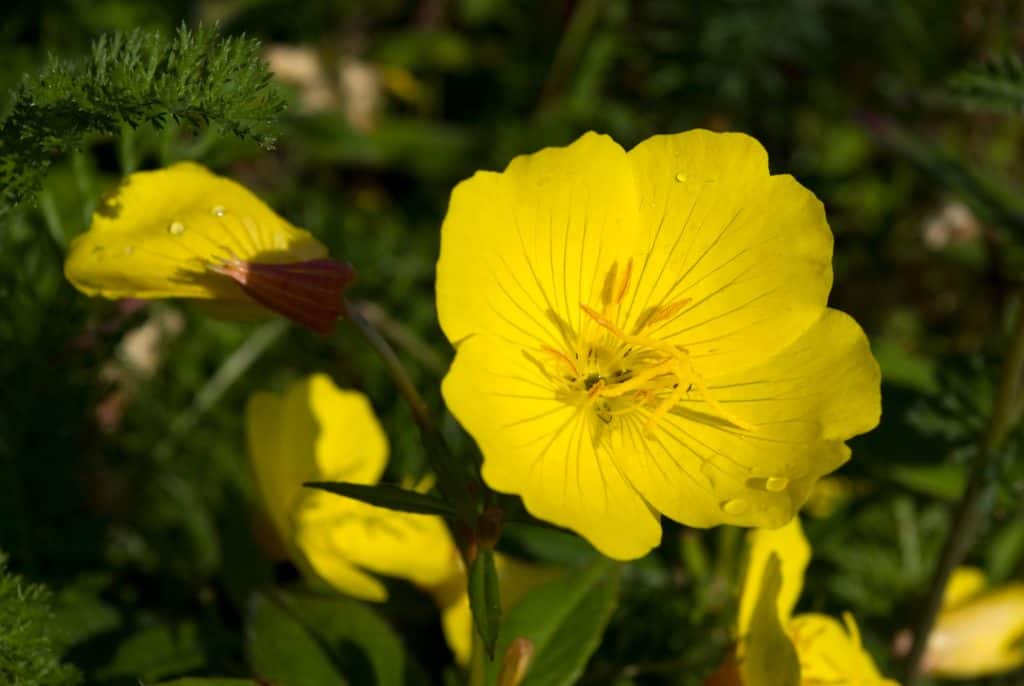
There is a variety of primrose, with the most popular being early-spring bloomers. They pop with a vibrant pop of color that will do great for your covered porch. They are evergreen in many parts of the country and can stand the cold during winter. However, during summer, they require shade.
What to Consider Before Growing Plants Under Your Covered Porch
There are endless possibilities when growing plants under your porch. You can create a beautiful outlook to give you a more delightful place to relax and entertain with family and friends. However, to achieve this, you need to be adequately prepared.
A Wish List for the Plants You Want to Grow
There are many things to think about when choosing plants. You want to make sure they are suitable for your porch to make it more vibrant without looking chaotic. For this reason, it is crucial that you research their blooms and foliage colors and how they grow. Once you know this, you can decide on how to arrange them and mix them up. You can also consider the shade of your porch so that they can contrast adequately.
As you make your wish list, consider if you want flowers, exclusively leafy plants, or edibles. Edibles can meet the needs of food as well as beauty and some even fragrance.
Your Budget
Be careful not to spend a fortune buying ready grown plants, containers, and other supplies like fertilizer, especially if you are working on a budget. You can buy or borrow seeds from a friend or get those that are discarded from nurseries. For the pots, baskets, and containers, purchase them from yard sales or turn your coffee tins into containers. The only thing you should spend a fair amount of money on is quality potting soil and fertilizer.
Watering, Drainage, Fertilizer, and Compost
For your plants to thrive, they require time and compost, regular watering for some, fertilizer, and proper drainage. Before you start planting, do your research on how to prepare these or ask a gardener who is well versed to do the planting for you. Otherwise, your time and effort will go to waste if you make a mistake, and the plants die.
These activities require time, so if you have a tight schedule, you might want to consider if you have the time to water regularly.
Knowing How to Maximize Your Porch Space
If you have a small porch, make sure your plants do not take up all the room. Maximize this space by being creative in your arrangement. Arrange your containers on the sides, on elevated areas, and hang basket-plants on the walls so that you have adequate space for you and your family.
Bottom Line
If you have a covered porch and want to bring more life to it, you only have to pick the right plants and plant them well to achieve this. Shade-loving plants include begonias, succulents, astilbes, bleeding hearts, hydrangea, toad lilies, and dead nettle, among others.
Do your research, invest time, use the right equipment, consider your budget, and consider the space you are working with to achieve the best results. Equally, grow plants in the right conditions or call in a professional to help you so that you do not waste time and effort during this venture.
Sources
- HGTV: 25 Shade-Loving Plants for Containers and Hanging Baskets
- Southern Living: Shady Ladies- Containers for Covered Porches
- Tennessean: 10 Plants for your Porch and Patio that you (almost) can’t Kill
- Gardening Know-How: Covered Porch Plants- Growing Plants that Don’t Need sun
- Gardening Channel: 9 Perfect Plants for Front Porch Ideas
- The Well Essentials: The Best Guide to Container Gardening
- The Old Farmer’s Almanac: 10 Tips for Starting a Balcony Garden

